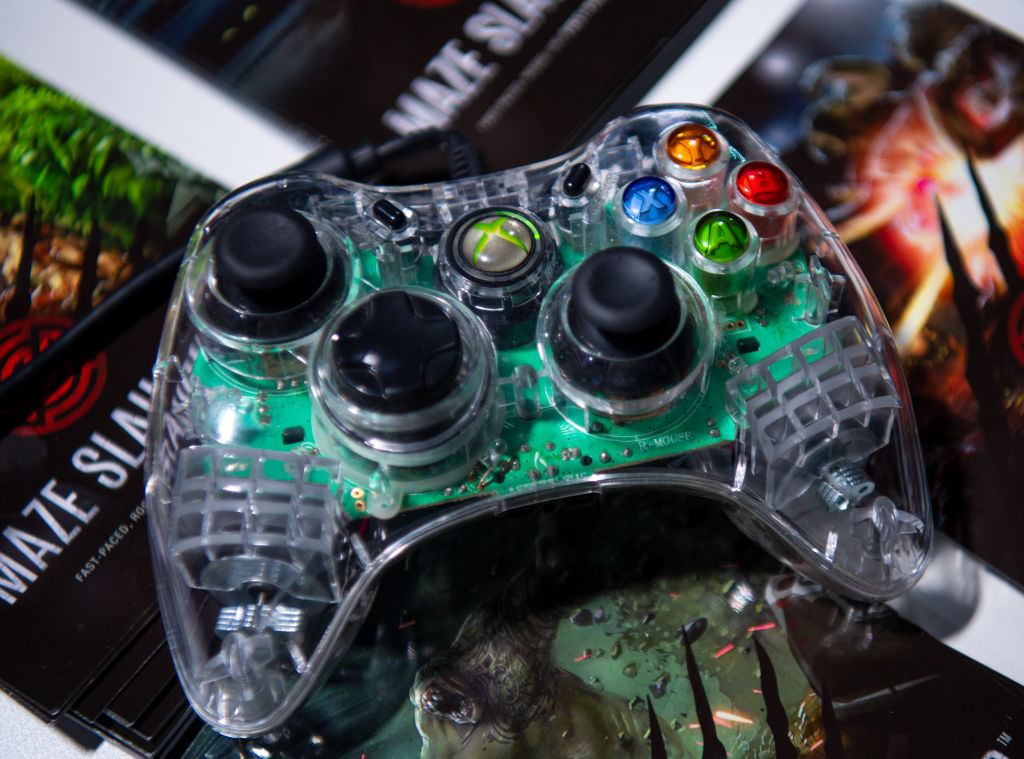
Source: picture alliance / Getty
Minus Nintendo’s hybrid trojan horse, current generation gaming consoles from Microsoft and Sony are well over half a century old. This also means talks of next generation consoles are starting to make news rounds. More recently, Sony spilled several details regarding the upcoming Playstation 5, while Microsoft announced a diskless version of the Xbox One S.
The house that Windows built is obviously working on its true next gen project currently codenamed Scarlett. However, the digital-only edition serves as a reminder of gaming’s future, including continual PC hardware architecture usage and an “always connected” approach. Higher visual fidelity isn’t the only thing to expect, and CASSIUS is going to break down five less obvious ideas coming down the pipeline. Read on
1 Improvements to the Idea of “Gaming As Service”
Despite the huge success of Fortnite and Apex Legends, freemium games (or Free-to-Play) have existed since the once-popular 2D MMORPG Mapel Story. As development time and cost began to get even more expensive with each generation, the idea of “gaming as service” makes sense in battling issues like the used game market. It’s the reason why Grand Theft Auto V’s 2013 release for seventh generation consoles (and later current gen) lead developer Rockstar to focus on making Grand Theft Auto Online a huge component alongside the single player epic.
According to reports, revenue for GTAV’s online component alone is over $500 million. The idea is fairly simple: get people interested with a fun, mechanically sound game and offer microtransactions for simple digital items like clothes and other miscellaneous gear. That’s how Fortnite has nearly reached $3 billion in revenue. That doesn’t mean single-player only experiences are going to be few and far between. Just know that the goal for any developer is steady income and, for better or for worse, microtransactions alongside pay-to-win are probably going to be safer bets. Even Electronic Arts is considering turning their top tier sports franchises like Madden and Fifa into a subscription-based service in lieu of yearly updates.
2 100 Percent Uninterrupted Gaming Experiences Between Console, Mobile—& Even Browser
Microsoft’s Xbox One might be in last place compared to the Playstation 4 and Nintendo Switch, but there were a few early concepts that did a decent enough job of displaying interesting tech.
Whether one owns the console itself and/or a powerful enough PC, first party game purchases transfer over to both alongside saved progress. If you’re playing something like Forza Horizon 4 or Gears of War on Xbox One, getting interrupted by your significant other’s request to watch How to Get Away With Murder and continuing the session on PC with the same progress is pretty efficient. Add the possibilities of Microsoft’s upcoming cloud gaming service through XCloud (or Azure), and one could even stream sessions to their mobile phone or tablet as well.
Sure, the Switch console sort of already does that by design while even offering a few Japan only streaming options. The problem with Nintendo’s current console is how underpowered and single-purpose it is. Playstation 4 already offers Playstation Now streaming service, which will probably see some improvement to match what Microsoft is offering. To have a better understanding of the future, one can look toward the current model Fortnite enjoys. Since the game is literally available to be played on any game with a screen, one simply has to use their Epic Games account on whatever device they’re using to play between sessions.
3 Consumer Level Virtual Reality Officially Moving Away From Niche Novelty
Those who have followed the current conversation regarding consumer level virtual reality understand the uphill battle in regards to sales and mainstream acceptance. Though PC has adopted VR through the Oculus Rift and HTC Vive, Sony is the only developer to dive in successfully through Playstation VR. So far, the headset has sold a little over four million units and will be backwards-compatible with the Playstation 5. More recently, Nintendo released a VR option for its kid-friendly Labo cardboard kit. Though there were plans for true compatibility, an Xbox One controller is included with every Oculus Rift and the console can stream to the headset after a cumbersome installation process.
By the time both next generation consoles are released from Microsoft and Sony, VR will probably be mainstream already looking toward experience like The Void and other multi sensory VR experiences. Add better processing speeds and easier use in different home environments and consumer level VR could be just as big as the consoles themselves.
4 Longer Development Times Between AAA Titles
Huge marquee titles like GTA, Halo, The Last of Us and God of War among others are the accumulation of years spent in development. As cloud gaming comes into prominence, real backwards compatibility becomes a common thing across the board and freemium “games as service” goes even more mainstream, AAA titles are probably going to be released sparingly. Thirty years ago, development of a game could be completely in a few months and even a few weeks. Between, creating open worlds, character models, soundtracks, the actual gameplay mechanics, quality assurance and other behind the scenes factors, next-gen titles are going to take longer to hit shelves.
As of this year, a study reported that 18 percent of developers are working on next gen console games. In the same study, only two percent were working exclusively on the follow-ups from Sony and Microsoft. Keep this in mind as 2020 is really only a year-and-some-change away. Like next-gen consoles launches of the past, expect a lot of transitional games for the first couple of years before exclusives become the norm. This does mean that indie developers will have a field day creating games that may offer AAA value, but with shorter run-times. Ninja Theory’s Hellblade, which launched in 2017 at a significantly reduced price point and eight-hour play time, enjoyed critical success similar to titles with bigger budgets.
5 Better Voice Control Assistant & Social Aspects
Siri went from sitting at the top of the voice control A.I. food chain when released nearly seven years ago to facing heated competition from Google Home and Alexa. Before that three-way battle, Microsoft followed Apple’s path by giving the Xbox One voice control out of the box before integrating their Cortana software years later. Regardless, Microsoft’s voice-controlled assistant is still fairly wonky. Playstation users were required to purchase a Playstation Camera to use voice control, which, isn’t as nearly as robust as what Microsoft had to offer.
There’s no doubt that voice-controlled assistants will be even associated with next-gen consoles outside of just simple commands. Expect voice control to become more prominent within the actual gaming experience once the next-gen consoles roll around. In the age of live video streaming allowing individuals to earn six-figure incomes, there are probably going to be improvements to the social aspect of gaming post Xbox Live and Playstation Network as well. If Google is allowing individuals to play games saved from YouTube videos through their streaming network, best believe others are sure to follow. As current gen allows video and photo capture to quickly be uploaded to Facebook and Twitter, hopefully someone allows the feature to be sharable for Instagram.
















